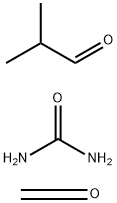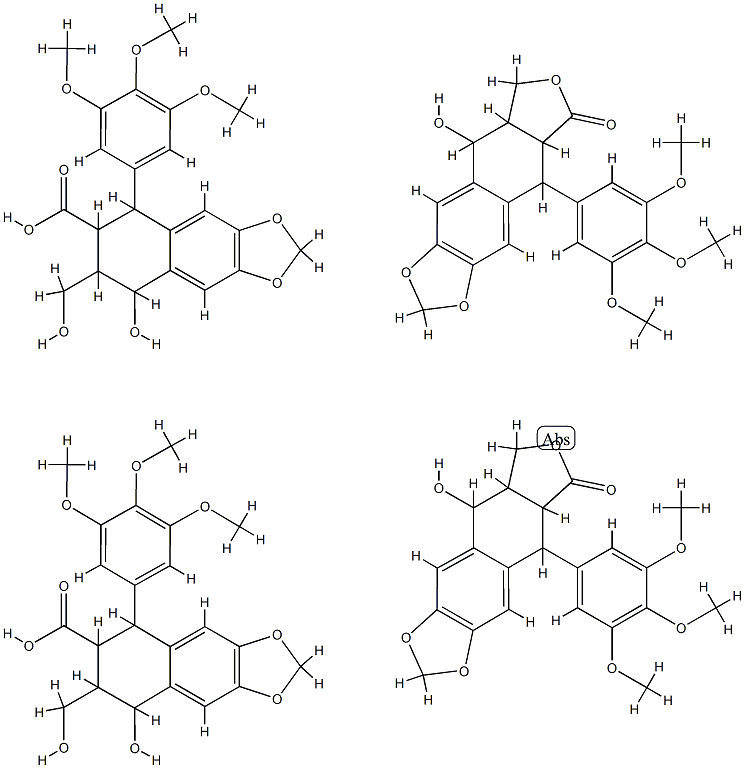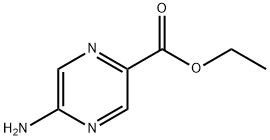Hello, I’d like to ask about fiberglass and plastic. Can fiberglass stick to plastic surfaces effectively? What factors influence whether they bond well or not? Are there specific types of plastic that fiberglass adheres to better? Also, what steps can be taken to improve the adhesion between fiberglass and plastic?
Does Fiberglass Stick to Plastic? Understanding Adhesion Between Materials
Related Encyclopedia
![3-[(E)-4,6-dimethylhept-2-enyl]oxolane-2,5-dione,2-[3-(oxiran-2-ylmethoxy)propoxymethyl]oxirane,4-(oxiran-2-yl)-7-oxabicyclo[4.1.0]heptane](https://chemcloud-1304660855.cos.ap-shanghai.myqcloud.com/compound/bbb16ce2863d42899585d90674283a10.png)
- 52368-54-4
- C30H48O9
- 552.69700
- All (0)
- China (0)
- (0)
- (C14H13NO)n
- 211.26000
- All (0)
- China (0)
- (0)

- 201058-08-4
- C15H16O2
- 228.28634
- All (0)
- China (0)
- (0)

- 28931-47-7
- C6H14N2O3
- 162.19
- All (0)
- China (0)
- (0)

- 11041-12-6
- C27H47N
- 385.66878
- All (0)
- China (0)
- (0)

- 70024-51-0
- C36H36Cl2
- 539.58
- All (3)
- China (0)
- (3)
- 0.00000
- All (7)
- China (4)
- (7)

- 9000-55-9
- C88H92O34
- 1693.65168
- All (2)
- China (0)
- (2)

- 39319-11-4
- C18H15P
- 262.285461
- All (1)
- China (0)
- (1)
- 9003-74-1
- C10H18
- 0
- All (7)
- China (4)
- (7)
Related Products More >
-
- 9002-86-2
- CNY Request For Quotation
-
- CNY Request For Quotation
-
- CNY Request For Quotation
-
- CNY Request For Quotation
-
- 465-42-11
- CNY Request For Quotation
-
- 465-42-10
- CNY Request For Quotation
-
- 465-42-9
- CNY Request For Quotation
-
- Request For Quotation


 沪ICP备2021018848号-5
沪ICP备2021018848号-5


Certain plastics, like polyethylene or polypropylene, are more difficult for fiberglass resin to bond with because of their chemical makeup and low surface energy. On the other hand, plastics like ABS or PVC tend to have better adhesion. To improve the bond, the plastic surface often needs to be cleaned thoroughly, sanded lightly to create a rougher texture, and sometimes treated with a special primer that promotes adhesion.
In practical situations, such as repairing plastic parts with fiberglass, these preparation steps are crucial. The fiberglass resin fills in the roughened plastic surface, locking the fibers in place as it cures and creating a strong bond. If the plastic is oily, dirty, or too smooth, the fiberglass layer might peel off or fail over time.
So, yes, fiberglass can stick to plastic, but it’s not automatic—it requires proper surface preparation and sometimes choosing the right type of resin for the plastic in question. This approach is widely used in automotive repairs, boating, and custom manufacturing where combining fiberglass with plastic parts is common.
Most plastics are polymeric materials with varying degrees of surface energy and chemical reactivity. Plastics such as polyethylene and polypropylene have low surface energy and are chemically inert, making it difficult for fiberglass resin to form a strong bond without surface treatment. In contrast, plastics like ABS (acrylonitrile butadiene styrene) or PVC (polyvinyl chloride) have higher surface energies and polar functional groups, which generally allow better adhesion with fiberglass resins.
From a materials science perspective, adhesion is largely governed by mechanical interlocking and chemical bonding. Fiberglass resin adheres mechanically by penetrating surface roughness or pores, which can be enhanced by sanding or etching the plastic surface. Chemical adhesion can be improved by applying primers or adhesion promoters that create compatible interfaces between the resin and the plastic.
In practical applications such as automotive body repairs or boat hull reinforcements, surface preparation is crucial. For example, when repairing a plastic bumper with fiberglass, the plastic is first cleaned and roughened to increase surface area, then treated with a primer to improve resin wetting and bonding. The resin impregnates the fiberglass cloth and bonds to the prepared plastic surface, creating a durable composite layer.
In summary, fiberglass can stick to plastic, but the success of the bond depends on the plastic’s chemical makeup, surface energy, and preparation methods. Proper surface treatment, resin selection, and application technique are essential to ensure a strong, long-lasting adhesion in real-world scenarios.
At the molecular level, adhesion between fiberglass and plastic depends on the compatibility of the resin’s chemical functionality with the plastic’s surface. Most thermosetting resins (e.g., epoxy) cure via cross-linking, forming covalent bonds that can interact with polar functional groups on the plastic. For instance, plastics like acrylonitrile butadiene styrene (ABS) or polycarbonate (PC), which contain polar nitrile or carbonate groups, exhibit higher surface energy and can form hydrogen bonds or van der Waals interactions with the resin’s amine or hydroxyl groups. Conversely, non-polar plastics such as polyethylene (PE) or polypropylene (PP) lack these functional groups, resulting in weak adhesion unless modified. This distinction is critical: without proper surface activation, fiberglass may delaminate from low-surface-energy plastics under stress, leading to structural failure.
Surface preparation plays a pivotal role in overcoming these limitations. Techniques like abrasion (sanding), flame treatment, or corona discharge increase the plastic’s surface roughness and energy, creating micro-mechanical interlocks and enhancing chemical reactivity. For example, sanding a polyethylene tank before applying fiberglass exposes crystalline domains that the resin can penetrate, while flame treatment oxidizes the surface, introducing polar carbonyl groups. In automotive and marine industries, where fiberglass-reinforced plastic (FRP) composites are common, these steps are standardized to ensure durability. However, over-treatment can degrade the plastic, reducing its mechanical properties—a balance engineers must carefully manage.
The resin system’s chemistry further influences adhesion. Epoxy resins, prized for their strong covalent bonding and thermal stability, are often preferred for high-performance applications involving engineered plastics like polyetherimide (PEI) or polyphenylene sulfide (PPS). Polyester resins, while cost-effective, may require additives (e.g., coupling agents) to improve adhesion to plastics. Vinyl ester resins, a hybrid of epoxy and polyester, offer a middle ground, combining chemical resistance with moderate adhesion to treated plastics. The choice of resin depends on the plastic’s properties, the operating environment (e.g., temperature, moisture), and the desired bond strength.
Misconceptions about fiberglass-plastic adhesion often arise from conflating different plastic types or underestimating surface preparation. For instance, assuming fiberglass will stick to any plastic “as-is” ignores the vast differences in surface energy between, say, PVC (high polarity) and PTFE (non-polar, fluorinated). Similarly, over-relying on adhesives without mechanical reinforcement can lead to cohesive failure (where the resin splits rather than detaching from the plastic). Professional applications demand rigorous testing, such as lap shear or peel tests, to validate adhesion under real-world conditions.
The significance of this interplay extends across industries. In aerospace, fiberglass composites are bonded to plastic honeycomb cores in lightweight panels, requiring precise control of resin viscosity and curing cycles to avoid voids. In medical devices, biocompatible epoxy resins adhere to plastic casings for implants, necessitating sterilization-resistant bonds. Even in consumer products, like fiberglass-reinforced plastic kayaks, adhesion quality directly impacts safety and longevity. As sustainability drives innovation, research into bio-based resins and recyclable plastic substrates is reshaping adhesion strategies, aiming to reduce environmental impact without compromising performance.
In conclusion, fiberglass can adhere to plastic, but success depends on a trifecta of material compatibility, surface engineering, and resin selection. By leveraging chemical interactions, mechanical interlocking, and tailored preparation, professionals achieve robust bonds that enable the creation of durable, lightweight composites. Missteps in any of these areas risk failure, underscoring the need for specialized knowledge and rigorous testing. As industries push the boundaries of composite materials, mastering fiberglass-plastic adhesion remains a cornerstone of engineering innovation, blending science with practicality to meet evolving demands.
At the core of adhesion lies the chemical compatibility between the resin matrix and the plastic surface. Thermosetting resins cure through cross-linking, forming a three-dimensional polymer network that can interact with the plastic’s functional groups. For instance, epoxy resins, which contain reactive epoxide and amine groups, can form covalent bonds with polar plastics like polycarbonate (PC) or acrylonitrile butadiene styrene (ABS), which possess carbonyl or nitrile groups capable of hydrogen bonding. In contrast, non-polar plastics such as polyethylene (PE) or polypropylene (PP) lack these functional groups, resulting in weak van der Waals interactions unless their surfaces are modified. This distinction is critical: without proper chemical engagement, the bond between fiberglass and plastic may fail under mechanical or environmental stress, leading to delamination or structural compromise.
Surface preparation emerges as a pivotal factor in enhancing adhesion. Techniques like abrasion (sanding), flame treatment, or corona discharge alter the plastic’s surface topography and energy. Sanding creates micro-roughness, enabling the resin to penetrate and form mechanical interlocks, while flame treatment oxidizes the surface, introducing polar carbonyl or hydroxyl groups that improve chemical bonding. For example, in automotive repair, sanding a plastic bumper before applying fiberglass filler ensures the resin anchors firmly, preventing cracking under impact. Similarly, in marine applications, flame-treated polyethylene hulls exhibit superior adhesion to fiberglass coatings, resisting water ingress and osmotic blistering. These processes, however, must be carefully controlled; excessive treatment can degrade the plastic’s mechanical properties or introduce residual stresses that weaken the bond over time.
The resin system’s rheology and curing kinetics further influence adhesion quality. Epoxy resins, known for their low viscosity during application, can flow into surface irregularities, maximizing contact area, while their slow curing allows for thorough wetting of the plastic. Polyester resins, though faster-curing, may require additives like coupling agents (e.g., silanes) to bridge the gap between their non-polar structure and polar plastics. Vinyl ester resins, combining epoxy-like adhesion with polyester’s cost-effectiveness, are often used in corrosive environments where chemical resistance is paramount. The choice of resin depends on the plastic’s properties, the operating conditions (e.g., temperature, UV exposure), and the desired balance between cost and performance.
Cross-field implications of fiberglass-plastic adhesion are profound. In medicine, fiberglass-reinforced plastic (FRP) composites are used to fabricate lightweight orthotic devices, where adhesion to biocompatible plastics like polyethylene terephthalate (PET) ensures durability and patient comfort. In renewable energy, fiberglass blades bonded to plastic hubs in wind turbines rely on robust adhesion to withstand cyclic loading and fatigue. Even in consumer products, such as fiberglass-reinforced plastic kayaks or surfboards, adhesion quality directly impacts safety and longevity. Conversely, misconceptions persist—for example, assuming fiberglass will adhere to any plastic “out of the box” ignores the need for surface activation, or overlooking the impact of plastic additives (e.g., plasticizers) that can migrate and weaken the bond over time.
The broader significance of this interplay lies in its role as an enabler of innovation. By tailoring surface treatments and resin formulations, engineers create composites that leverage the strength of fiberglass and the versatility of plastics, advancing fields from aerospace to construction. As sustainability drives research into bio-based resins and recyclable plastics, understanding adhesion mechanisms becomes even more critical, ensuring new materials meet performance standards while reducing environmental impact. In essence, the question of whether fiberglass sticks to plastic is not binary but a dynamic challenge solved through the integration of chemistry, physics, and engineering—a testament to human ingenuity in harnessing material properties for progress.